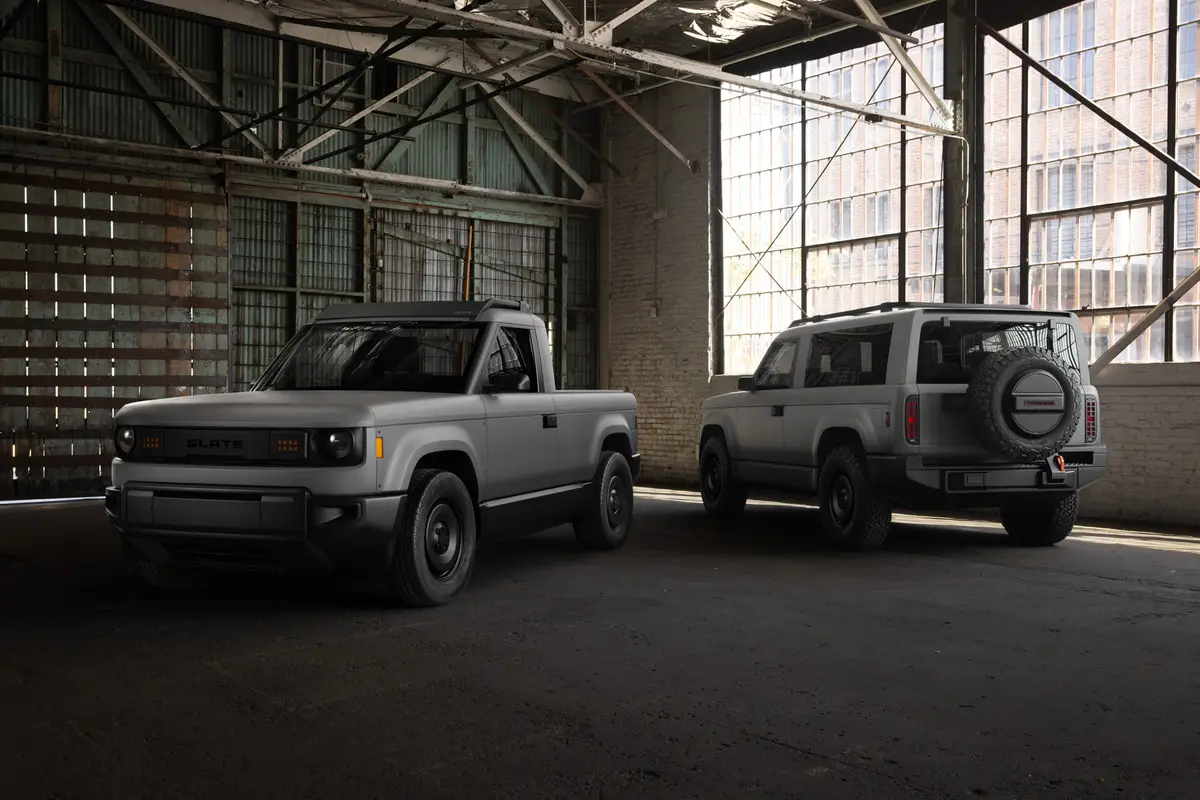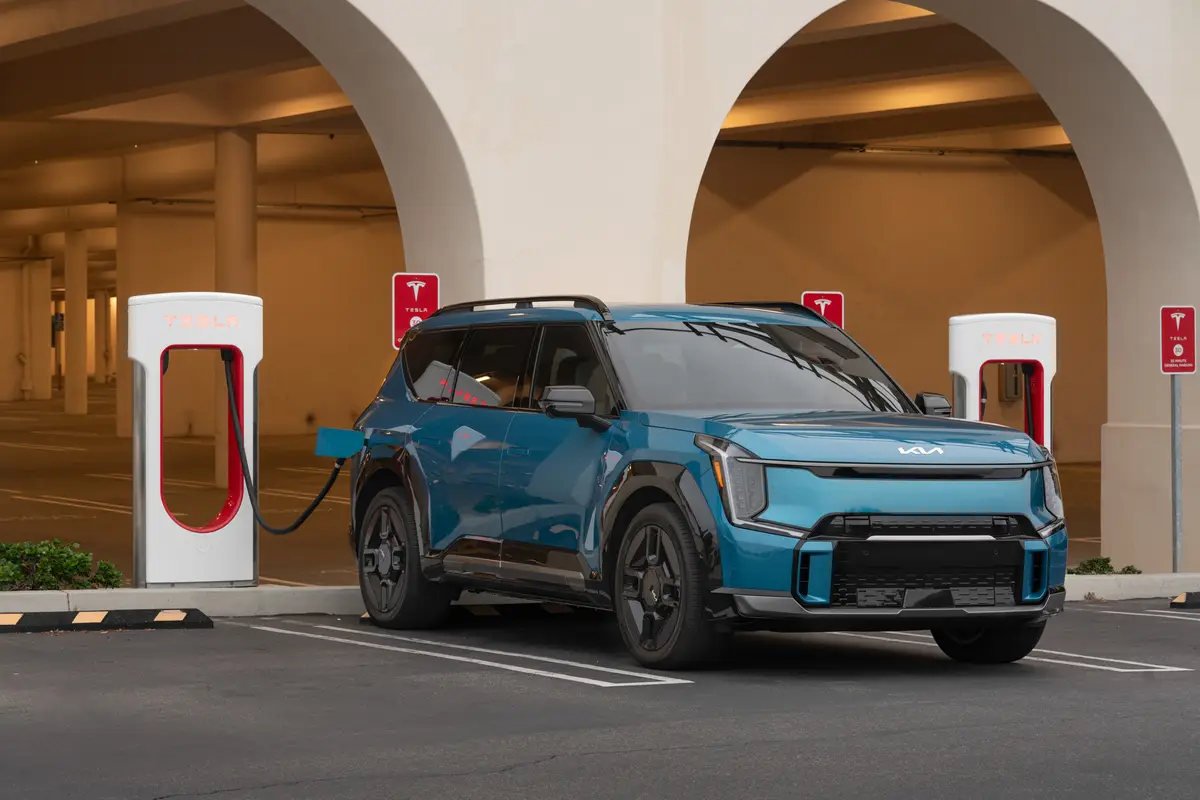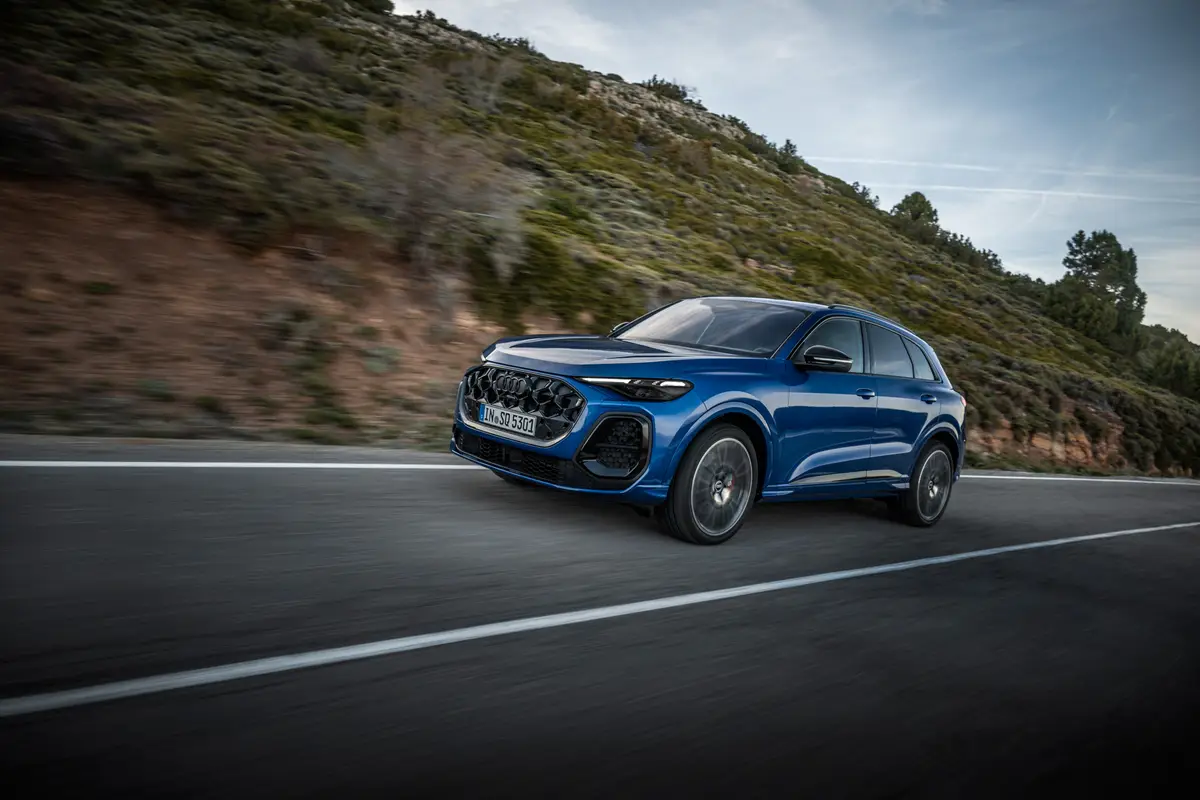The Detroit Newspapers's view
SCOTTSDALE, Ariz. — Audi is about 10 years late to the SUV party with its 2007 Q7. But you’d never guess that was a problem, judging by the reaction of Ginger Gibson and her friends.
Gibson, 45, a stay-at-home mother of four from Columbus, Ohio, was on her way to breakfast at the elegant Sanctuary resort in Scottsdale, when she stumbled upon a parking lot brimming with freshly washed and polished Q7s.
Lined up in a row, the four-wheel-drive Audis almost seemed to stand at attention with their imposing 19-inch vertical grilles, massive hoods and bulging “shoulders.”
Gibson, who owns a 2004 Volvo XC90 and is a former Audi owner, couldn’t resist taking a test drive.
“It looks more luxurious than my Volvo — and I think my husband would like this better,” she said.
The base V-8 version of the Audi Q7 goes on sale in June, starting at $50,620, including $720 for shipping.
A premium V-8 model debuts at the same time, starting at $60,620, and includes a six-passenger seating configuration, a navigation system, sunroof and 19-inch wheels and tires.
In September, Audi will introduce a more affordable V-6 version of the Q7 that is expected to be priced around $40,000. The company, which is one of Volkswagen’s premium divisions, is contemplating turbo-diesel and gas-electric hybrid variants in the future.
Gibson and her friends seemed relatively unfazed by the Q7’s prices. During their test drive, Gibson and her friend, Becky Pryor, took the Q7 over to Pryor’s home in nearby Paradise Valley.
Pryor’s husband, 46-year-old entrepreneur Gary, owns a 2004 Audi A8 sedan and says he’s been longing for the day that the German automaker launches its first sport utility vehicle.
“It’s about time,” he said, eyeing the Q7. “All our neighbors have Porsche Cayennes. But this is better. It doesn’t look like an SUV.”
The Cayenne is a fascinating comparison.
The Cayenne, the Q7 and the Volkswagen Touareg are all siblings. The Q7 and the Touareg are built on separate lines at a VW plant in Bratislava, Slovakia. The Cayenne is assembled there, too.
The Touareg and the Q7 weigh roughly the same, but the Q7’s wheelbase is six inches longer. Audi stripped the Q7 of some of the offroad hardware found on its sisters, most notably the low-range gear. The Audi is more cut out for the opera than the open air.
And that kind of differentiation probably works in its favor. It at least sets the German SUVs far enough apart from each other to avoid confusing consumers, something that can be an issue with domestic siblings like the Chevrolet Tahoe and GMC Yukon.
From my perspective, the Q7 is a lot better looking than the frog-faced Cayenne, with a more domineering presence on the road.
A sporty Q7 S Line package, priced at around $3,000, will be available at the June launch and promises to enhance the Audi’s looks even more, with unique colors, a monochromatic shell instead of the two-tone treatment and choice of 20- or 21-inch wheels and tires.
In the cabin, the Q7 offers buyers the option of five-, six- or seven-passenger seating configurations. Surprisingly, none of the setups offers power folding seats, something that you can get on domestic competitors such as the Ford Expedition.
One quirk: The literal-minded German engineers — or maybe it was the lawyers — decided to put an icon of a book next to the front cupholders, something that I had never seen before on an SUV and found puzzling.
“It means look in the owner’s manual, where it will tell you not to spill coffee onto your lap,” explained Filip Brabec, Audi of America’s product planning manager.
Despite that rigorous attention to detail, there are no adjustable pedals on the Q7 for shorter drivers and the rear-seat DVD entertainment system will not show up in dealerships until a month after launch.
But in other ways, the Q7 is at the forefront of technology, with such features as optional “side assist,” which monitors the driver’s blind spots during lane changes over 35 mph and issues a visual alert via flashing yellow LEDs in the housing of the left side mirror.
The power liftgate on the Q7 is adjustable, too — a real benefit in cramped garages — and buttons on the right side of the cargo hold let you lower the rear floor to make loading easier.
There are plenty of deluxe options as well, enough to vault the Q7 into the $65,000-plus price class if you get them all, including a panorama glass sunroof, adaptive headlights and adaptive cruise control.
I tested a V-8 Q7 priced at close to $60,000 on my Phoenix drive. It was equipped with a potent 350-horsepower 4.2-liter V-8 and mated to a six-speed Tiptronic transmission that lets you shift manually if you feel like it. Audi says initial estimates put the Q7’s fuel economy at 18 mpg in city driving and 21 mpg on the highway.
The V-8 engine feels quick, despite the Q7’s hefty mass of two and a half tons. Audi says the 0-60 sprint takes a mere 7 seconds, which is sports-car territory. The engine is electronically governed with the top speed limited to 130 mph.
The 3.6-liter V-6 model that arrives this fall won’t be nearly as fast or powerful. The engine, a larger version of the optional six-cylinder offered in the TT, will deliver 280 horsepower and 265 pounds-feet of torque. With the six-speed Tiptronic transmission, Audi said the V-6 should provide 0-60 acceleration times of just over 8 seconds.
The Q7 that I tested was equipped with Audi’s optional adaptive air suspension system, which features adjustable ride height and something called dynamic roll stabilization. That’s a fancy way of saying the vehicle cornered flat, with little body roll or lean, even in tight curves. The ride was remarkably smooth — not too floaty and not too harsh.
The Q7’s cabin is plush, yet understated, with lots of leather, real wood and tasteful aluminum trim. One feature that’s a bit offputting at first is the Multi Media Interface, or MMI, which is Audi’s version of BMW’s much-maligned iDrive controller.
Audi uses MMI to control such basic functions as climate and audio systems, as well as advanced features like the optional adaptive cruise control. It is not intuitive and takes some time to get used to — but it’s not nearly as complicated or intimidating as the BMW controller.
Ginger and Becky, of course, didn’t fuss over the MMI. They were more intrigued by the idea of Audi introducing its first SUV — although a long time coming, still the freshest face in a crowd populated by nearly all its luxury competitors.
Latest news



